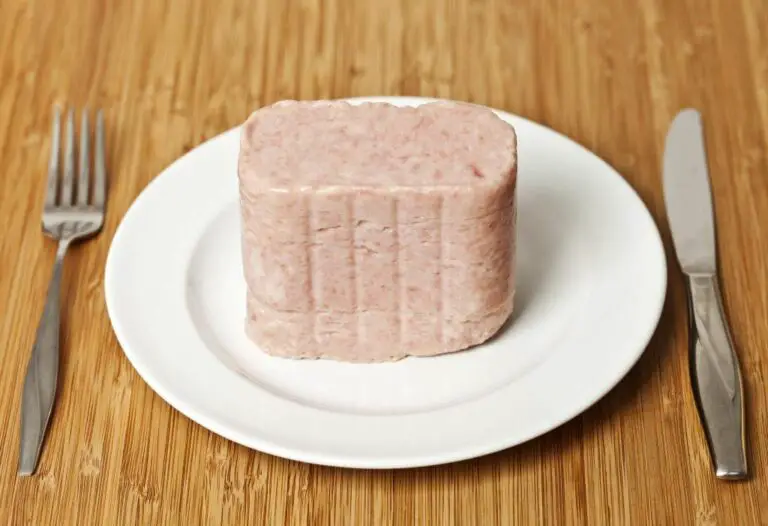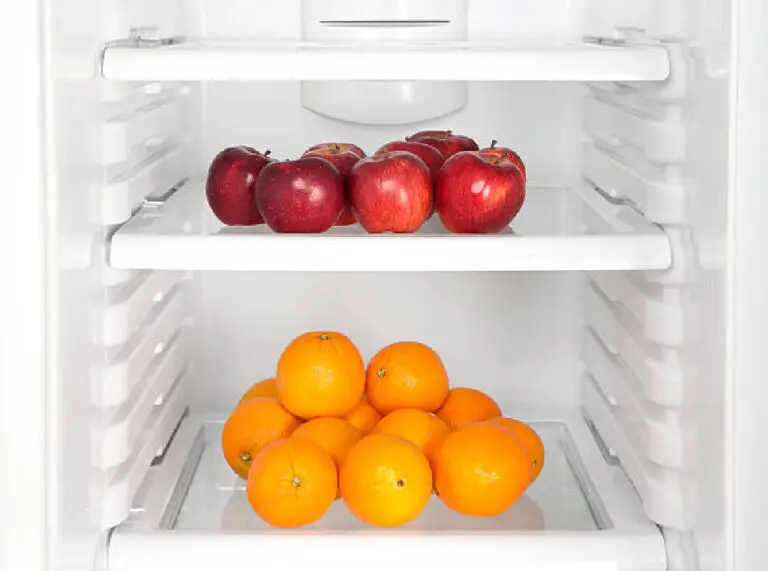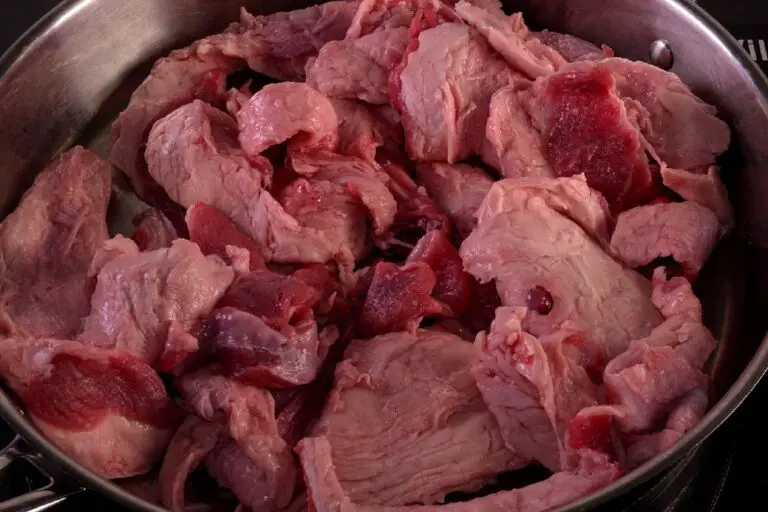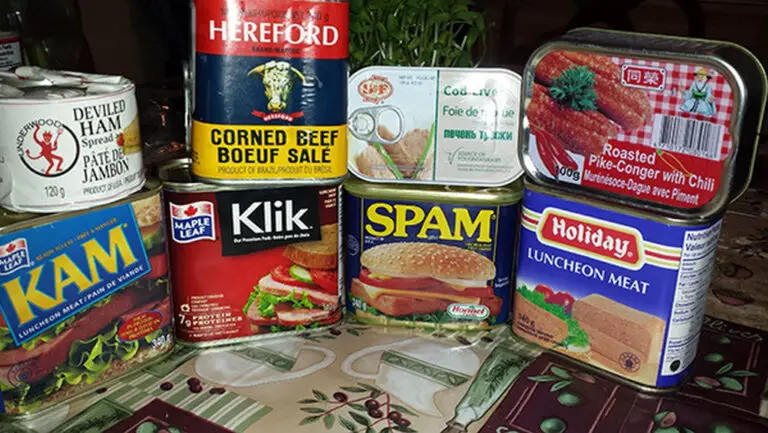Does Peanut Butter Need to Be Refrigerated after Opening? How To Store It?

Peanut butter is a staple ingredient in many households, and it’s not surprising why. Its rich and creamy texture makes it a popular choice for spreads, sauces, and baking recipes.
But many people are left with a nagging question: Does peanut butter need to be refrigerated after opening? Peanut butter does not need to be refrigerated after opening, but it can help extend its shelf life.
And if so, how should it be stored? In this article, we’ll explore the answers to these questions and provide you with some tips on how to store peanut butter correctly to ensure it stays fresh for as long as possible.
Whether you’re a peanut butter lover or just a curious foodie, this article is for you. So let’s dive in and discover all there is to know about storing peanut butter!
What Is Peanut Butter Made Of?
Peanut butter is a staple in many households and is a popular spread for sandwiches, crackers, and baked goods. But what exactly is it made of? Peanut butter is a simple mixture of ground peanuts with a small amount of added oil and salt.
The process of making peanut butter starts with roasted peanuts, which are then placed into a grinder. The peanuts are ground into a smooth paste, and oil and salt are added to enhance the flavor and texture.
When the peanuts are ground, their natural oils come out, but adding more oil helps get the right consistency. Some brands also add additional ingredients, such as sugar, honey, or stabilizers, to improve the texture and taste.
The type of peanuts used to make peanut butter can greatly impact the final product. Runner peanuts, which are the most commonly grown type, are preferred for their higher oil content, which leads to a smoother and creamier peanut butter. Some brands also use Valencia peanuts, which have a sweeter taste and a slightly crunchier texture.
Regardless of the type of peanuts used, the end result is a versatile and nutritious spread that is enjoyed by people of all ages.
Does Peanut Butter Need to Be Refrigerated after Opening?
Many people wonder if it’s necessary to refrigerate peanut butter after opening the jar. The answer is not as straightforward as you might think, as it depends on several factors. We will examine the reasons behind why some peanut butters need to be refrigerated and others do not.
The oils in the peanuts can go rancid over time, especially if exposed to high temperatures or humidity. To prevent this from happening, some peanut butter manufacturers add hydrogenated oils or other preservatives to the mixture. These preservatives help extend the shelf life of the peanut butter, which means it can be stored at room temperature without going bad.
However, these added oils can also make the peanut butter more susceptible to spoilage, so it’s recommended to refrigerate this type of peanut butter.
On the other hand, natural peanut butters, made from just peanuts and sometimes salt, do not contain any added preservatives. As a result, these types of peanut butter are more susceptible to spoilage and should be stored in the refrigerator after opening.
Refrigerating natural peanut butter helps to slow down the process of rancidity and keep the oils from going bad. Also, putting natural peanut butter in the fridge will help thicken it, making it easier to spread.
Whether or not peanut butter needs to be refrigerated after opening depends on the type of peanut butter you have. If your peanut butter contains added preservatives, it can be stored at room temperature, but if it’s a natural peanut butter, it’s best to store it in the refrigerator.
Peanut Butter Shelf Life
Peanut butter is a pantry staple that can last for several months if stored correctly.
The shelf life of peanut butter depends on many things, such as the type of peanuts used, whether or not oil is added, and how it is stored.
If you know how long peanut butter lasts and how to store it properly, you can make sure it stays fresh and safe to eat.
According to the National Peanut Board, an unopened jar of peanut butter can last six to nine months at room temperature. Once the jar is opened, the shelf life is shorter as the peanut butter is exposed to air and light, which can cause the oil to go rancid and the flavor to deteriorate.
To extend the shelf life of open jars of peanut butter, it is best for you to store them in the refrigerator, where opened peanut butter can last for up to three months. This will help slow down the oxidation process and prevent the growth of bacteria and mold.
WARNING
You need to check the expiration date on the jar and look for signs of spoilage before consuming peanut butter. A rancid smell, separation of oil, or mold growth are all signs that the peanut butter has gone bad and should be discarded.
Also, if the peanut butter has been kept in a warm place for a long time, it may have a rancid taste and should be thrown away. Proper storage and keeping a close eye on the shelf life can help to ensure that peanut butter remains fresh and safe to consume.
Storage Peanut Butter at Room Temperature
Storing peanut butter at room temperature is a common practice, but it can impact its freshness and shelf life. Peanut butter is a perishable food that is affected by temperature, light, and air. It is important to store it correctly to keep it as fresh and safe as possible.
It is important to consider the temperature of the room when storing peanut butter at room temperature. Exposure to warm temperatures, such as those found in a kitchen near the stove or on a sunny windowsill, can cause the oil to go rancid and the flavor to deteriorate more quickly. To ensure maximum freshness, it is best to store peanut butter in a cool, dry place, away from direct heat and light sources.
In addition to the temperature, peanut butter needs to be kept in airtight containers so that it doesn’t get exposed to air and light. So, it is important to pay attention to how it is stored to make sure it stays as fresh and safe as possible.
Freezing Peanut Butter
Freezing peanut butter can be a convenient way to make it last longer, but you should think about how it will change in texture and taste. It is important to store it correctly to keep it as fresh and safe as possible.
When peanut butter is kept in the freezer, the freezing process can change the way it feels and tastes. Freezing can cause the oil to separate, and the peanut butter can become dry and crumbly when it is thawed.
Peanut butter should be kept in airtight containers so that freezing doesn’t change the way it feels or tastes too much. This will prevent exposure to air, which can cause freezer burn, and will help to keep the peanut butter fresh and flavorful. When thawing frozen peanut butter, it is best to let it sit at room temperature for a few hours to allow the oil to re-absorb.
Freezing peanut butter is a convenient way to make it last longer, but you should be aware of how it will change in texture and taste. When stored correctly, frozen peanut butter can be a tasty and useful pantry staple. However, it is important to pay attention to how it is stored to make sure it stays as fresh and safe as possible.
Advantages and Disadvantages of Different Storage Methods
When it comes to storing peanut butter, there are a variety of options available, each with its own set of advantages and disadvantages. Understanding these pros and cons can help you make an informed decision about the best storage method for your needs.
The easiest way to store peanut butter is at room temperature, since you don’t need any special tools or preparation. The biggest advantage of storing peanut butter at room temperature is that it is always ready to use. However, storing peanut butter at room temperature also has its disadvantages. Room temperature can cause the peanut butter to spoil more quickly and the oil to separate, which can negatively impact the flavor and texture.
Freezing peanut butter is another storage option, and it can help extend the shelf life of the product. The advantage of freezing peanut butter is that it helps prevent spoilage and also makes it a more versatile pantry staple. However, freezing can also impact the texture and flavor of the peanut butter, and it requires a little more preparation and planning, because the peanut butter needs to be thawed before it is used.
Refrigerating peanut butter is another option, and it is a good choice for those who want to extend the shelf life of the product. The advantage of refrigerating peanut butter is that it helps to prevent spoilage and keeps the peanut butter fresh for longer.
However, refrigerating peanut butter can also cause the texture and flavor to be impacted, and it requires a little more preparation and planning, as the peanut butter needs to be brought to room temperature before it is used.
Reheating Peanut Butter

Sometimes, you might have leftover peanut butter, and wonder if it’s okay to reheat it. Reheating peanut butter is not only possible but also convenient, as it can save you time and help you make use of leftovers.
We’ll explore how to reheat peanut butter correctly and what you should keep in mind when doing so.
There are two main methods to reheat peanut butter: using the stovetop or using the microwave.
- Reheating peanut butter on the stovetop is a straightforward process. Just put the peanut butter in a saucepan over low heat and stir it constantly until it gets soft again and can be spread. This method is best for large quantities of peanut butter and will ensure that the peanut butter is heated evenly. However, it can take longer than using the microwave, so keep that in mind.
- Using the microwave to reheat peanut butter is a quicker method and is best for small quantities of peanut butter. Place the peanut butter in a microwave-safe dish and heat it on high for 10-15 seconds at a time, stirring between each interval. Repeat this process until the peanut butter has reached the desired consistency. Be careful not to overheat the peanut butter, as it can cause the oils to separate and become less spreadable.
When reheating peanut butter, it’s important to keep in mind that overheating it can cause the oils to separate and make the peanut butter less spreadable. Overheating peanut butter can also change the way it tastes, making it taste rancid or bitter. To avoid these problems, it’s best to reheat peanut butter on low heat and stir it frequently to ensure that it’s heated evenly.
How to Tell If Peanut Butter Has Gone Bad
With time, it’s possible for peanut butter to go bad. If you’re not sure if your jar of peanut butter is still safe to eat, it’s important to know how to tell if it’s gone bad. We’ll explore some signs that your peanut butter has gone bad and what you should do about it.
An off-odor is one of the most obvious signs that peanut butter has gone bad. If the peanut butter has a strong, sour, or rancid smell, it’s likely that the oils in the peanuts have gone bad and the peanut butter is no longer safe to eat.
If the peanut butter has been sitting out at room temperature for a long time, the smell will be especially strong. If you’re unsure about the odor, try opening a new jar of peanut butter and comparing the two to see if there’s a noticeable difference.
Another sign that your peanut butter has gone bad is if the texture has changed. If the peanut butter is no longer smooth and creamy and instead has become gritty, dry, or separated, it’s likely that the oils in the peanuts have gone bad. Additionally, if you see mold growing on the surface of the peanut butter, it’s a clear sign that it’s no longer safe to eat.
Finally, the taste of the peanut butter can also give you an indication if it’s gone bad. If the peanut butter has a sour, bitter, or rancid taste, it’s likely that the oils have gone bad and it’s no longer safe to eat. To be sure, you can also try a small spoonful of the peanut butter to see if it tastes normal or if there’s any noticeable difference.
Conclusion
In the end, whether or not peanut butter needs to be put in the fridge after it has been opened depends on the type of peanut butter and the person. Natural, oil-based peanut butters usually need to be kept in the fridge to keep them fresh longer, but regular, processed peanut butters don’t.
However, storing peanut butter in the refrigerator can improve its texture and flavor. Regardless of the type of peanut butter, it’s important to keep it in an airtight container and away from direct light and heat to preserve its freshness. By following these guidelines, you can ensure that your peanut butter stays fresh and flavorful for as long as possible.






